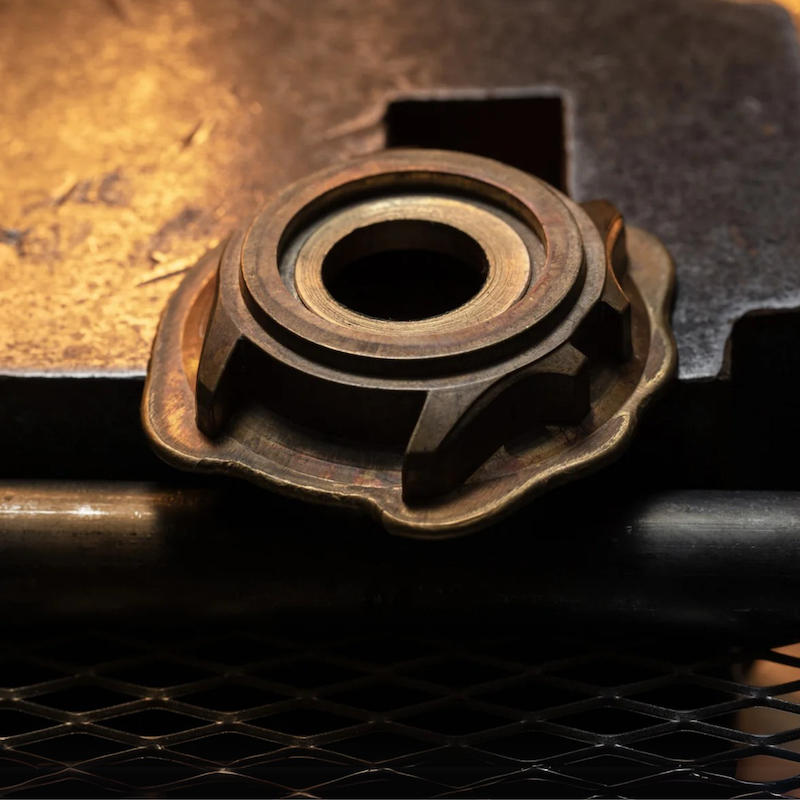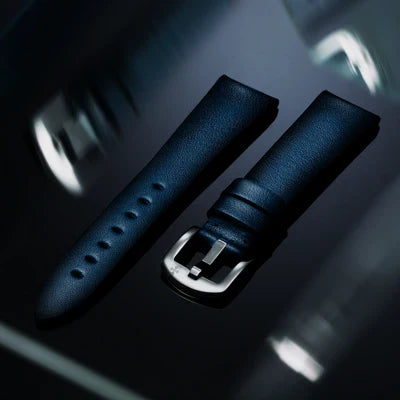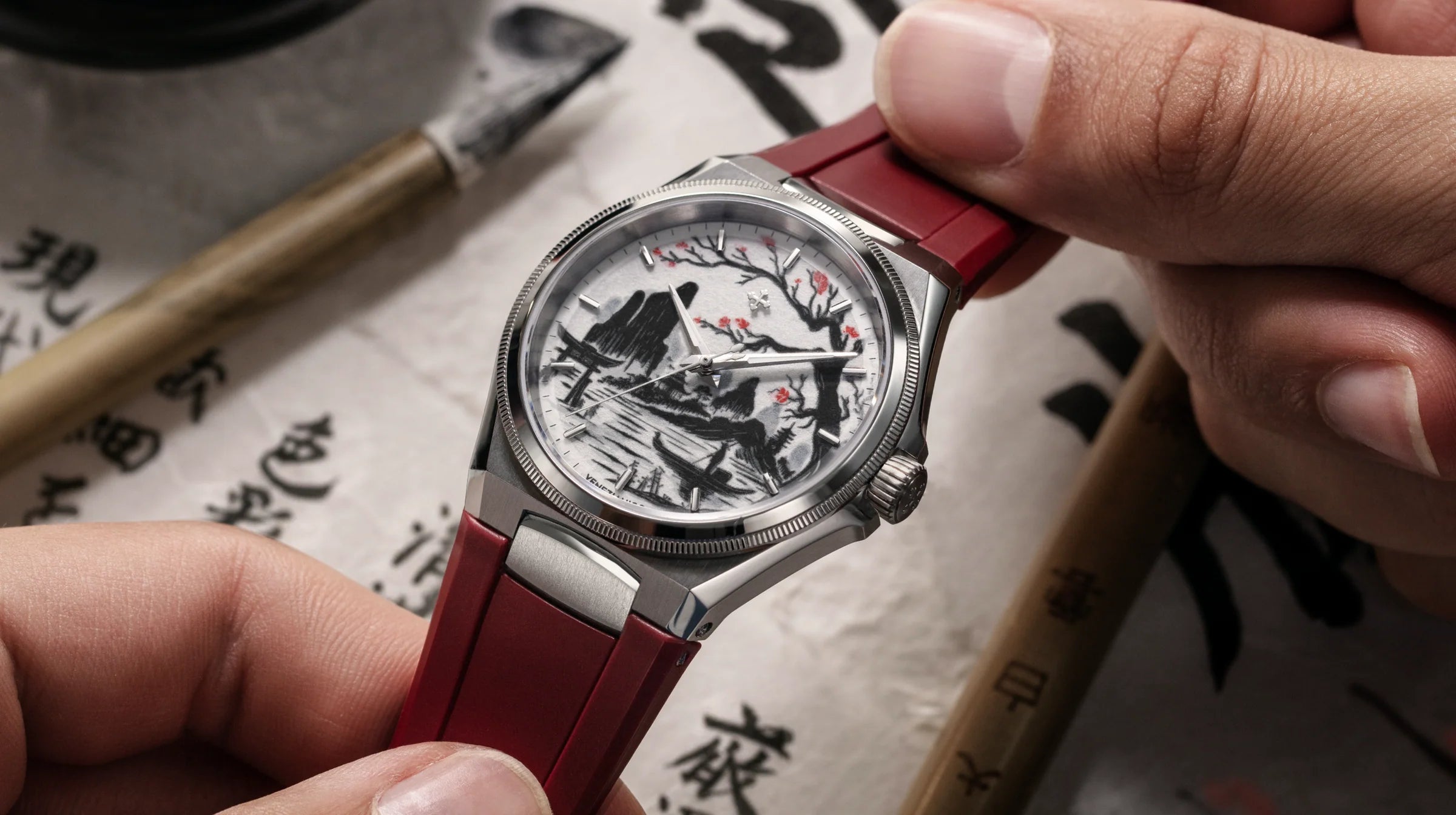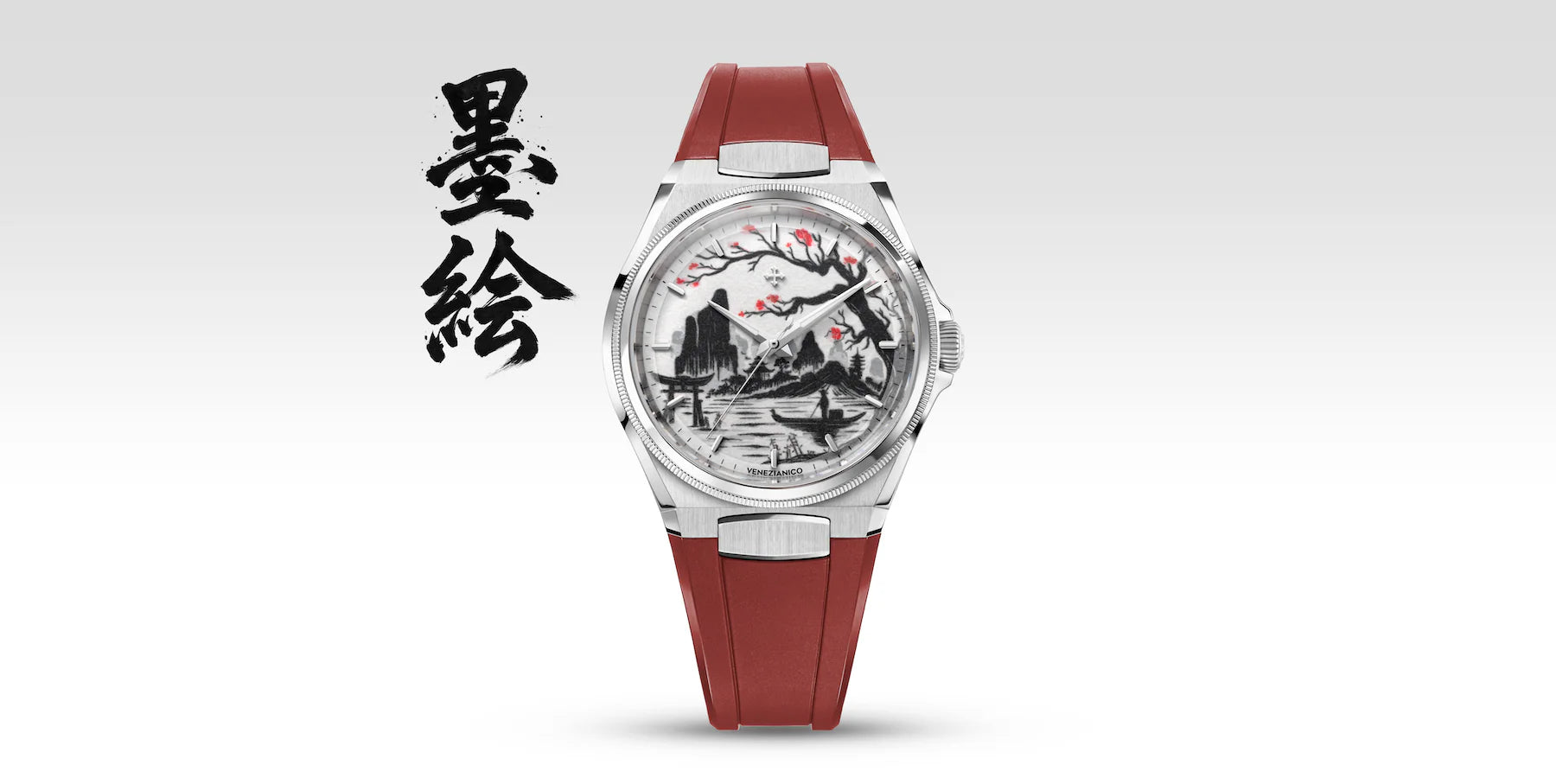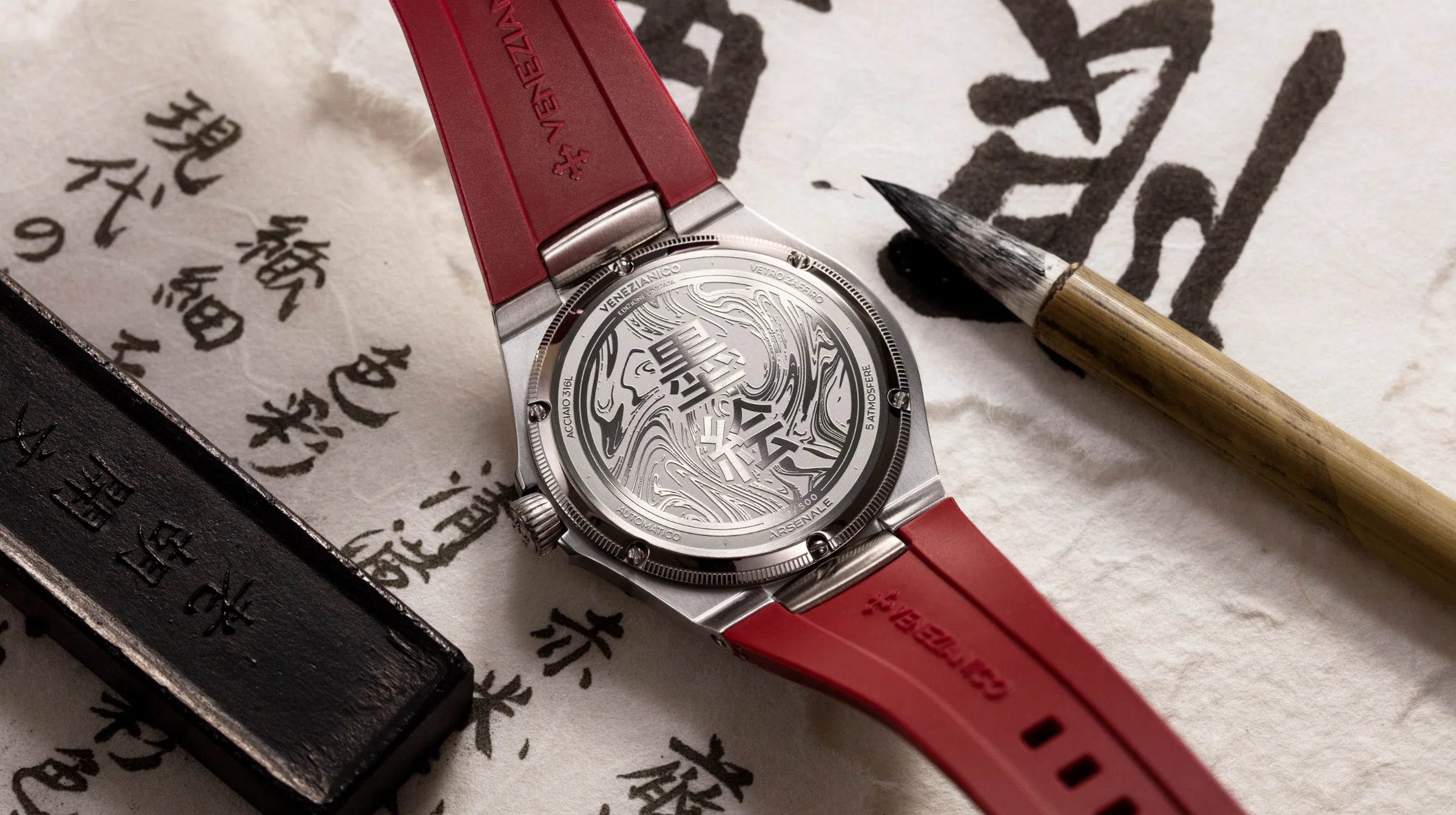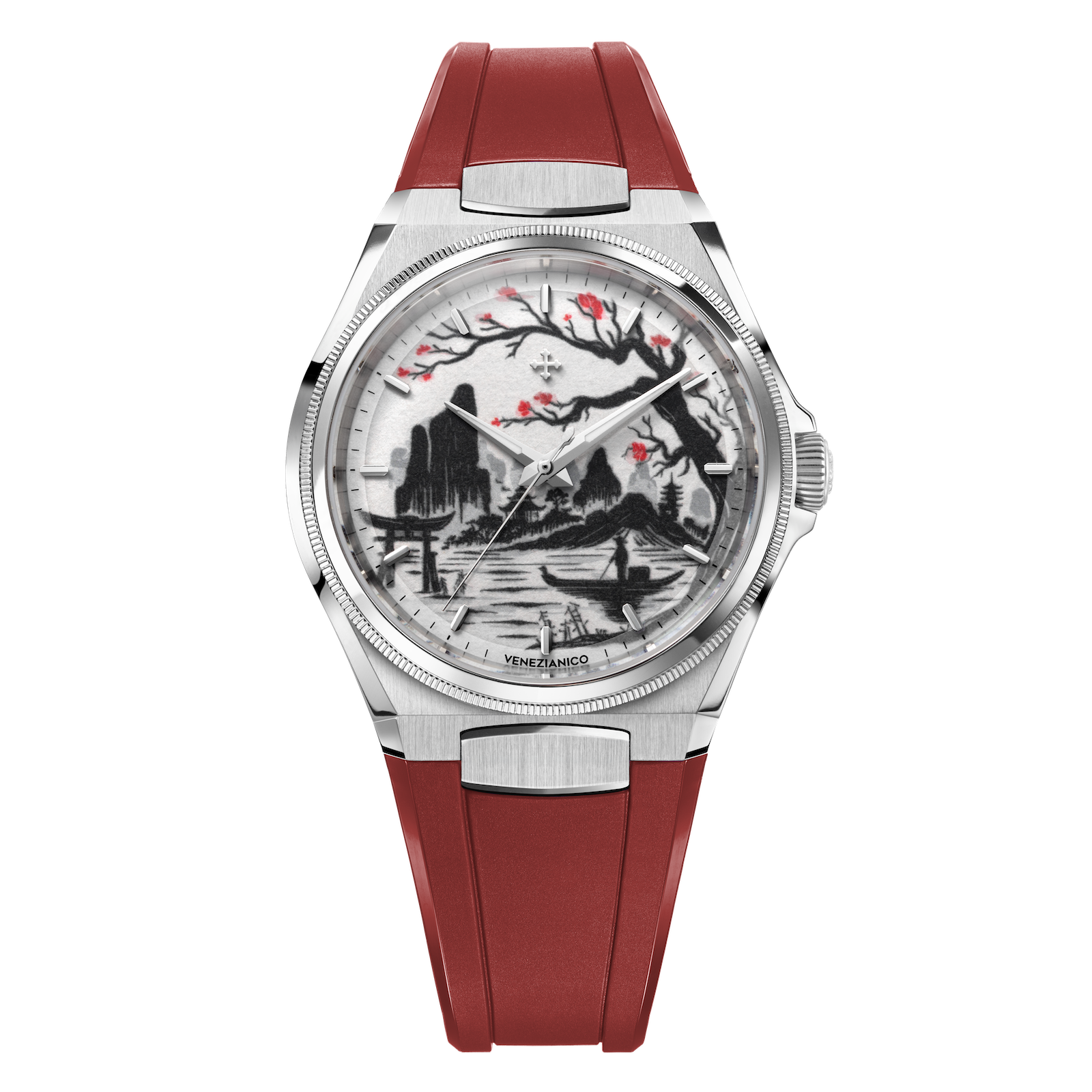
Arsenale Sumi-e 墨絵 - Limited Edition
 Pay in installments at checkout.
Pay in installments at checkout.
All recent U.S. import tariffs are already included in our prices. With Delivery Duty Paid (DDP) shipping, tariffs, duties and fees are fully covered. The price you see at checkout is exactly what you pay, with no surprises. Enjoy a smooth and worry-free shopping experience.
Arsenale Sumi-e is born from the same spirit of exploration that guided Venice for centuries along the Silk Road. Just as spices, silks, and ideas once journeyed from East to West, this creation weaves together two worlds united by craftsmanship and the pursuit of harmony. The dial, made from genuine Washi paper, is created through a five-step pad-printing process that recreates the delicacy of ink and its subtle gradients on paper, giving life to a poetic landscape suspended in time.
CASE MATERIAL: 316L Stainless Steel
DIMENSIONS: Ø40mm, 44mm lug-to-lug
THICKNESS: 9.95mm (including crystal)
DIAL: Crafted on Japanese Washi paper through a five-step pad-printing process
MOVEMENT: Cal. Miyota 9039 Automatic
CRYSTAL: Sapphire crystal with anti-reflective coating
BEZEL: 316L Stainless Steel
WATER RESISTANCE: 5 ATM (50 meters)
STRAP: Integrated rubber strap with stainless steel end links
All orders include free shipping. Here are the average delivery times:
- EU Countries: 1-2 business days
- United Kingdom: 2-3 business days
- USA: 2-3 business days
- Other Countries: 2-5 business days
If the watch does not meet expectations, it can be returned within 14 days for a full refund of the purchase amount. For more info, check out our Terms and Conditions.

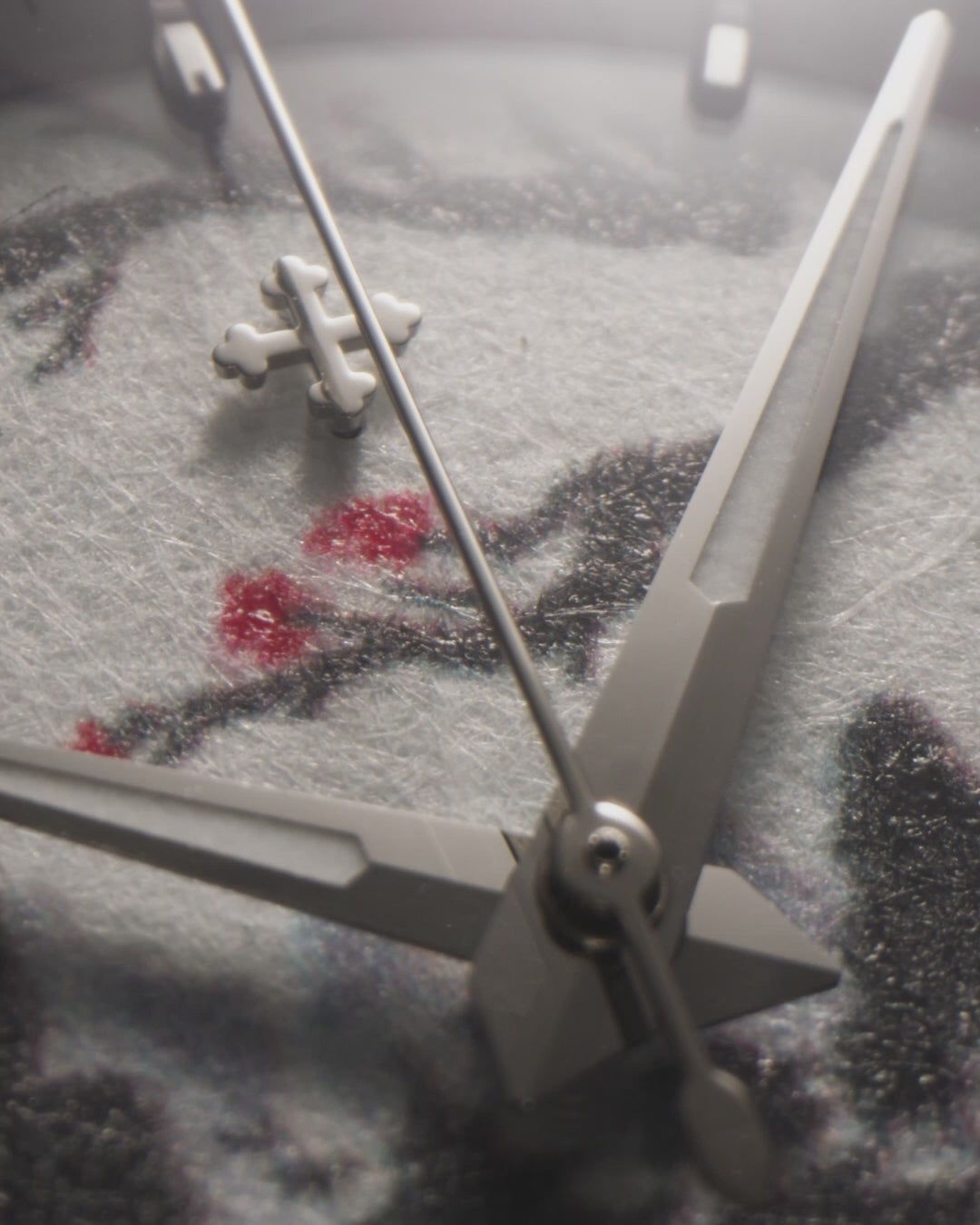
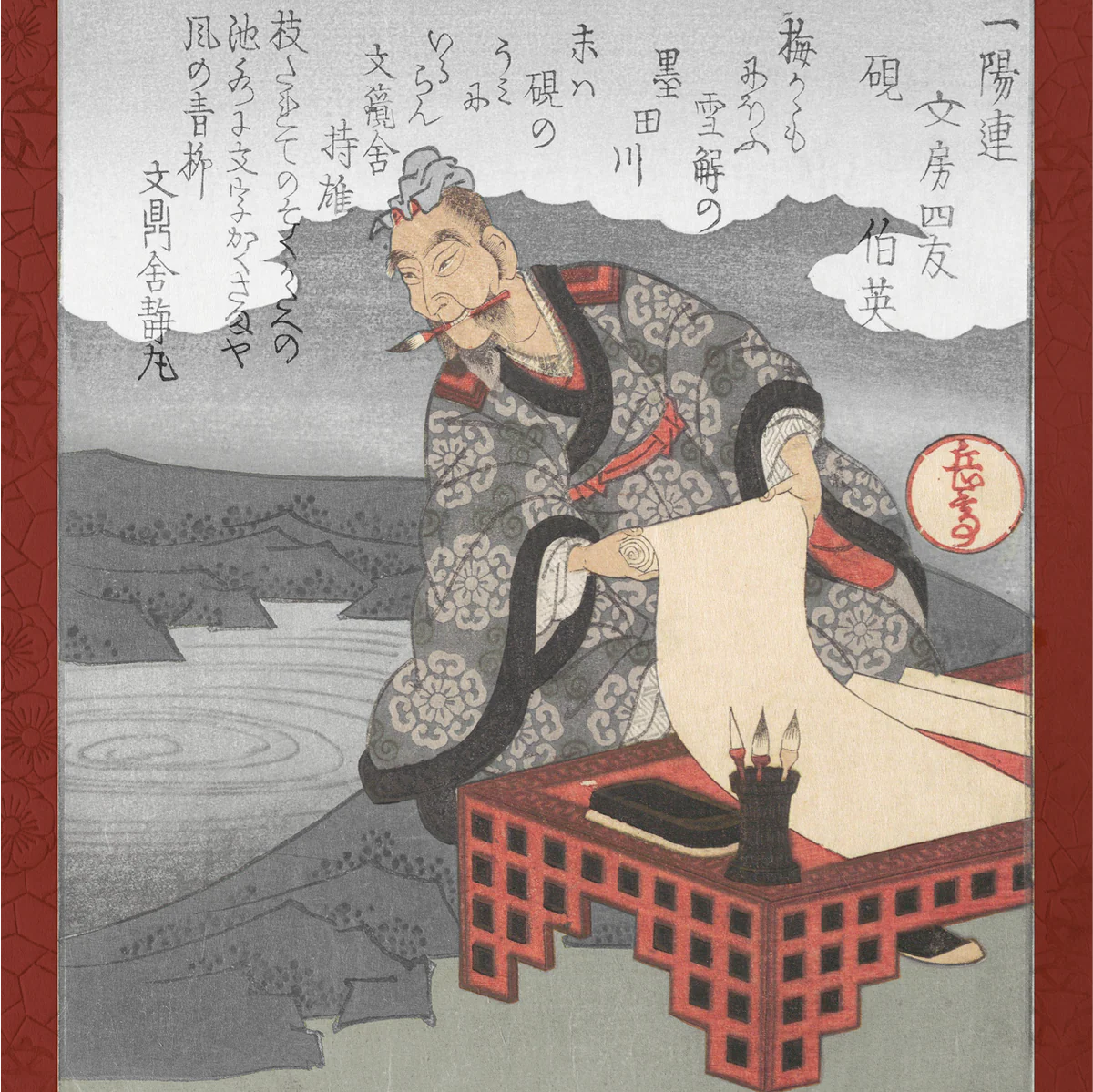
Sumi-e was introduced to Japan in the mid-14th century, spreading through Zen monasteries as both an artistic and spiritual practice. Painting thus became a form of meditation, capable of expressing the essence of the subject through just a few essential strokes. Over time, Sumi-e established itself as one of the most representative arts of Japanese culture, preserving its symbolic value and finding expression not only in painting, but also in calligraphy and decorative art.
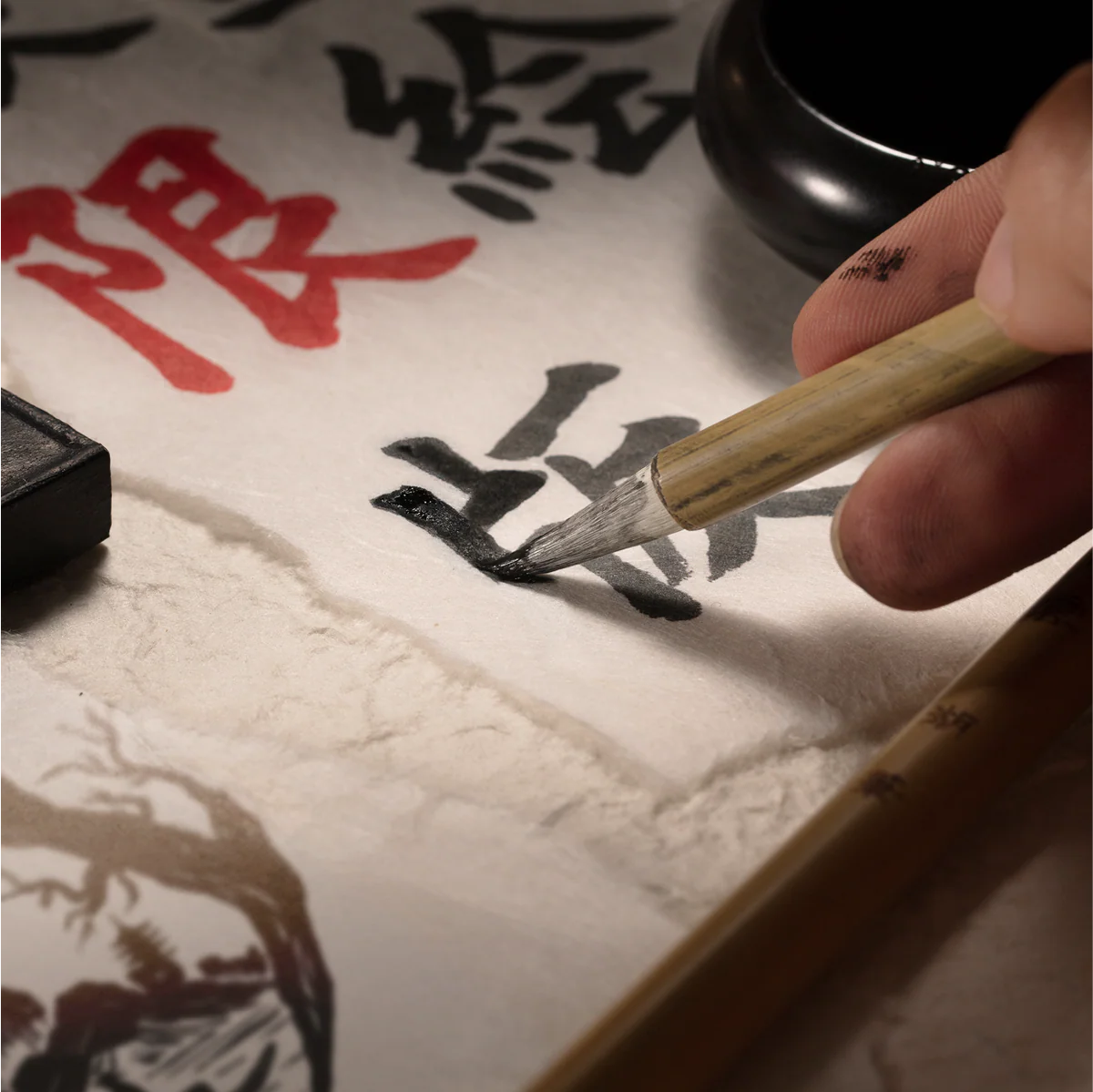
The technique is based on the use of black ink (sumi) applied with brushes of different sizes onto washi paper, a traditional Japanese medium known for its strength and natural texture. By varying pressure and the amount of water, the artist achieves tonal gradations that create contrasts between solid and empty spaces, giving depth and movement to the composition. Each stroke is final and allows no correction: the power of Sumi-e lies precisely in this essentiality, which demands both technical mastery and artistic sensitivity.
Sumi-e was introduced to Japan in the mid-14th century, spreading through Zen monasteries as both an artistic and spiritual practice. Painting thus became a form of meditation, capable of expressing the essence of the subject through just a few essential strokes. Over time, Sumi-e established itself as one of the most representative arts of Japanese culture, preserving its symbolic value and finding expression not only in painting, but also in calligraphy and decorative art.
The technique is based on the use of black ink (sumi) applied with brushes of different sizes onto washi paper, a traditional Japanese medium known for its strength and natural texture. By varying pressure and the amount of water, the artist achieves tonal gradations that create contrasts between solid and empty spaces, giving depth and movement to the composition. Each stroke is final and allows no correction: the power of Sumi-e lies precisely in this essentiality, which demands both technical mastery and artistic sensitivity.


Technical details
Ø40 mm, lug-to-lug 44 mm, total thickness 9.95 mm
316L Stainless Steel
Crafted on Japanese Washi paper through a five-step pad-printing process
Miyota 9039, automatic, 3-hands, no date
Swiss-Made BGW9 Super-LumiNova®
316L Stainless Steel
Sapphire with anti-reflective coating
Screwed
Engraved, fixed with six screws
Symbolism and Harmony
On the caseback, the Japanese characters 墨絵 (Sumi-e) are engraved, identifying the painting technique that inspired the model. Around them, an engraved motif evokes ink dissolving in water — a symbol of balance and harmony between gesture and material. The fluid lines and depth of the engravings create a dynamic, vibrant effect, recalling the movement of the brush across the paper. At the bottom appears the progressive numbering from 1 to 500, highlighting the uniqueness of each piece.
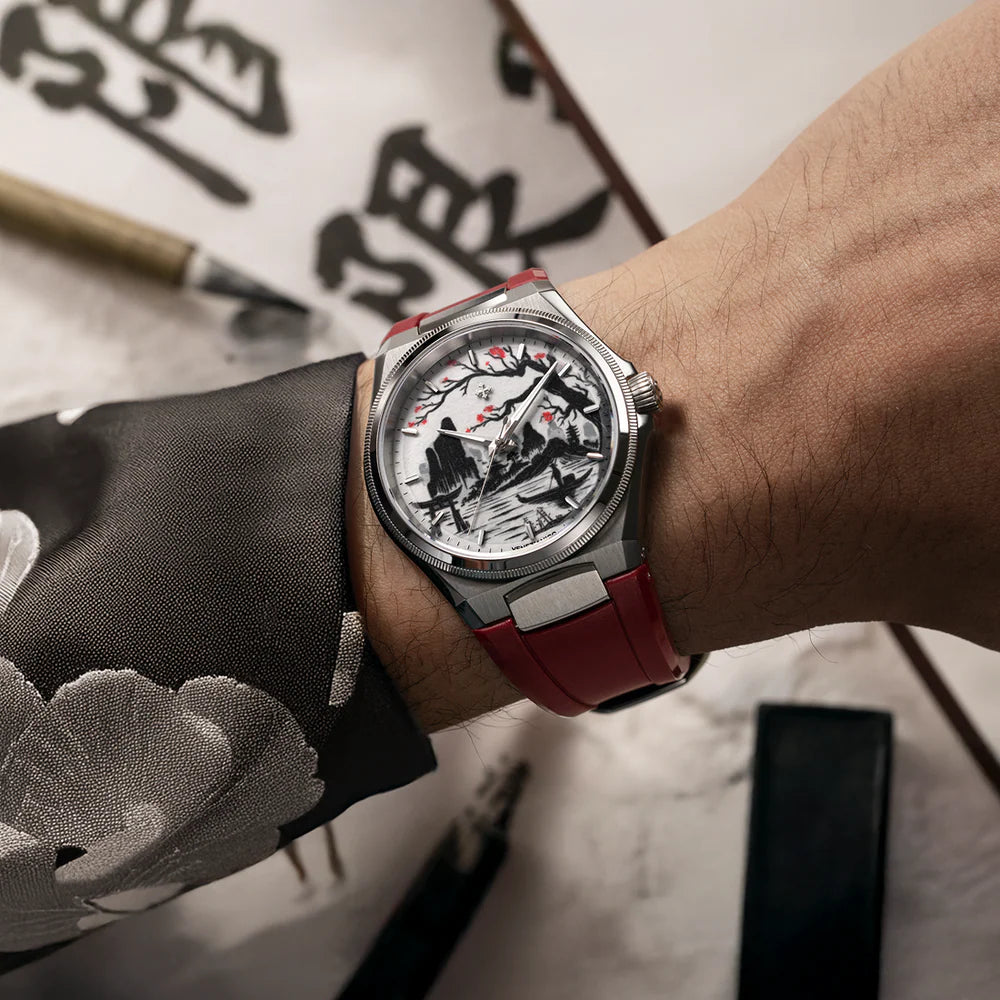
Arsenale Sumi-e 墨絵 is born from the encounter between two traditions that share the same vision of harmony. The satin-finished steel case, rigorous and proportioned, interacts with the Washi paper dial, whose natural texture captures light like a stroke of ink on water. Each element is the result of precise gestures — of hands that translate different sensibilities into a single expression of balance. Wearing it means taking part in this pursuit, carrying on the wrist an object that unites distant cultures through a shared devotion to beauty and craftsmanship.
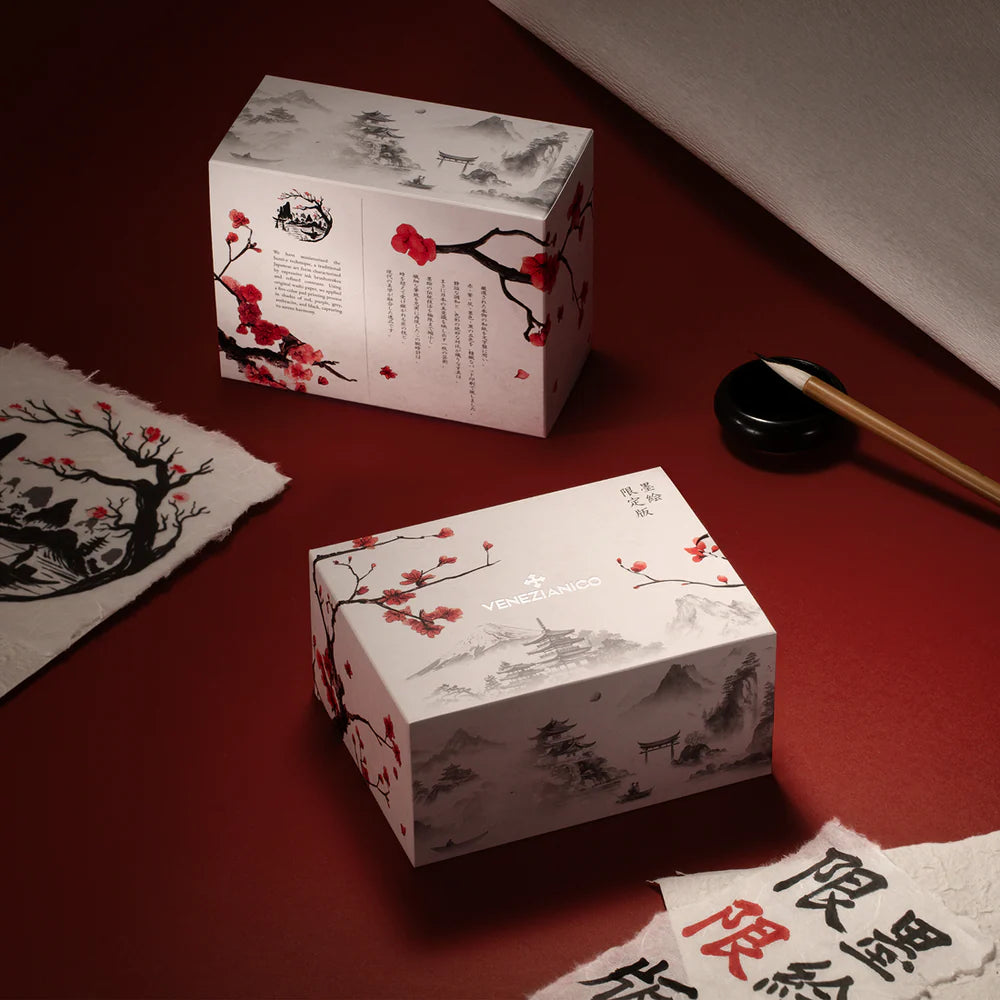
To accompany the watch, a dedicated box has been created that reflects the visual language of the dial, extending the project’s aesthetic beyond the object itself. The surface is decorated with a motif inspired by the original design, reproduced in high definition to preserve the shades and contrasts typical of the Sumi-e technique. On the underside, a short inscription in English and Japanese tells the story behind the concept and the dialogue between art, culture, and technique that guided its development.
Arsenale Sumi-e 墨絵 is born from the encounter between two traditions that share the same vision of harmony. The satin-finished steel case, rigorous and proportioned, interacts with the Washi paper dial, whose natural texture captures light like a stroke of ink on water. Each element is the result of precise gestures — of hands that translate different sensibilities into a single expression of balance. Wearing it means taking part in this pursuit, carrying on the wrist an object that unites distant cultures through a shared devotion to beauty and craftsmanship.
To accompany the watch, a dedicated box has been created that reflects the visual language of the dial, extending the project’s aesthetic beyond the object itself. The surface is decorated with a motif inspired by the original design, reproduced in high definition to preserve the shades and contrasts typical of the Sumi-e technique. On the underside, a short inscription in English and Japanese tells the story behind the concept and the dialogue between art, culture, and technique that guided its development.




